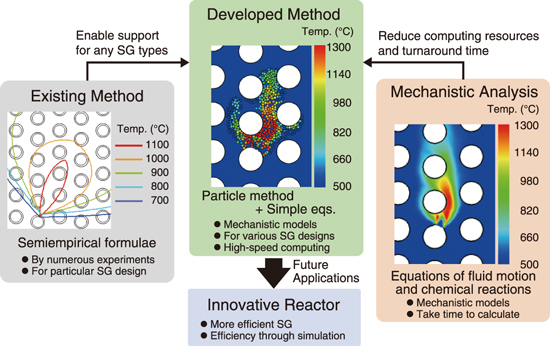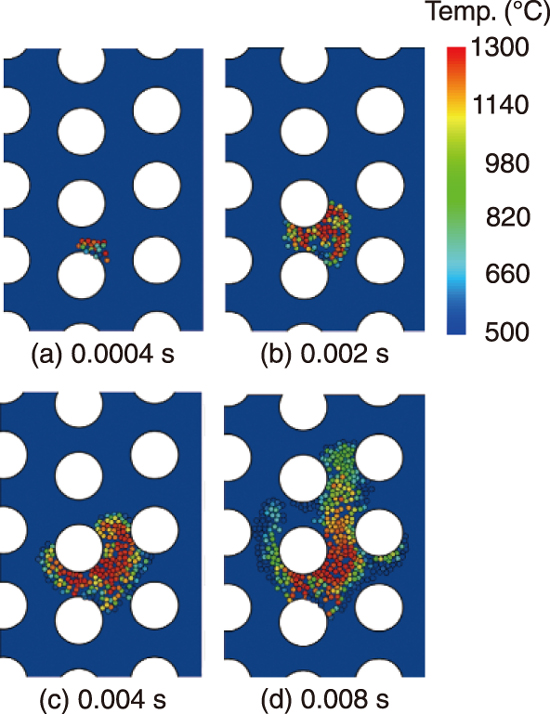
Fig.7-3 Purpose of the developed method

Fig.7-4 Steam flow in an SG
The steam generator (SG) in a sodium-cooled fast reactor consists of many heat-transfer tubes through which water flows to produce steam for a power generation system. Figs.7-3 and 7-4 show a cross-section of an SG. When water leaks from a crack in a failed heat-transfer tube, it reacts chemically with the surrounding sodium and causes various types of damage to the SG. Therefore, evaluating the sodium–water reaction phenomena is important for the safety assessment of an SG.
As shown in Fig.7-3, the conventional method evaluates safety using some empirical formulae developed based on numerous experiments for a particular design. In recent years, numerical simulations, as well as experiments, were performed to drastically reduce the time required and cost for a new experiment. However, the sodium–water reaction phenomena are complex and involve fluid motion and chemical reactions. Hence, considerable time is required to numerically solve the exact equations of these phenomena.
For the development of innovative reactors, a variety of new SG designs has been explored and the need for a faster simulation method has been recognized. Hence, we adopted a particle method characterized by a simpler computational principle, faster calculation, and easier extension to three dimensions as compared to the conventional method.
However, it was necessary to reconsider the heat of the sodium–water chemical reaction under the framework of the particle method. Our method treats the steam leaking from the tube as aggregation of particles. At each time step, the position, velocity, and heat by chemical reactions of individual particle are evaluated based on the equations for fluid motion and chemical reactions. Simplifying these equations could reduce the computational cost.
It is important to verify and validate the calculation results of the developed method. We compared the results obtained by the particle method with those by a mechanistic multiphase flow analysis code that has been validated previously. Fig.7-3 shows the temperature distribution generated by the sodium–water reaction. The developed method can obtain a temperature distribution comparable to that of the mechanistic code and reduce the calculation time to less than 1/10. As shown in Fig.7-4, the developed method can also simulate the time development of the sodium–water reaction phenomenon. For the safety assessment, we used the temperature distribution to evaluate the degradation of the tube wall and to predict the occurrence of tube failure.
The future work includes improvement of the applicability of this method and evaluation of multiple tube failure events for actual experiment situation.
(Wataru Kosaka)
<Previous: 7 Research and Development of Fast Reactors | Next: 7-2>